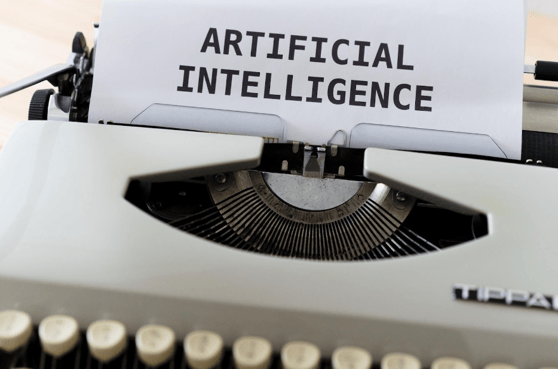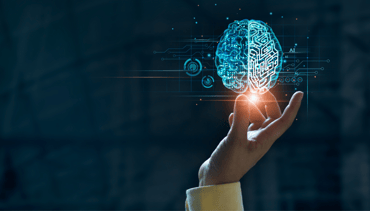Throughout history, various technologies have led to the acceleration of breakthroughs in the industry. For example, the telescope improved astronomy, while using a microscope led to innovations within biology.
Artificial intelligence has the potential to act in the same way.
Regarding science, artificial intelligence has already led to the discovery of clean energy, aerospace technology, and various advancements in electronics. The Department of Energy has been searching for ways to help expand the use of artificial intelligence to lead to the acceleration of discoveries.
This leads to the suggestion that artificial intelligence can further our understanding and accelerate innovation. As you continue reading below, we’ll discuss how AI accelerates innovation.
What is Artificial Intelligence?
So, what is artificial intelligence? Artificial intelligence was developed by computer systems to complete specific tasks that a human being, such as decision-making, speech, and pattern identification, would generally complete. Artificial intelligence uses various types of technology; however, many professionals frequently debate whether or not these types of technology are considered AI.
Many professionals believe most of the technology we use today is considered advanced, which is some of the beginning steps of artificial intelligence. Yet, despite many of its debates, when most humans use artificial intelligence, they’re referring to machine learning.
Some machine learning, such as Chat GPT, allows a machine to generate written materials, analyze data, or even steer a car!
Examples of AI
Believe it or not, you most likely have interacted with artificial intelligence in today's technology-driven world. In simplest terms, AI uses specific algorithms that create models instructing a computer system to complete particular tasks, such as song recommendations or translating from one language to another. Some examples of artificial intelligence today include:
- Google Translate - Uses algorithms to translate different languages.
- Chat GPT - Uses LLMs (Large Language Models) to generate responses to questions or specific responses.
- Tesla - Can provide self-driving cars using computer vision.
- Netflix - Uses algorithms to generate recommendations to users based on their previously viewed movies and television shows.
AI in the Workplace
Across many organizations, artificial intelligence is becoming more used each day. Using AI as an innovation tool for specific tasks that don’t require human intervention can save an organization time and money and can minimize the risk of encountering human error. Some ways that artificial intelligence can be used in various organizations are:
- Medical industry - Using artificial intelligence, the healthcare system can use robotics to assist with surgeries to help lower blood loss and infection risks.
- Finance - By using artificial intelligence, the finance industry can analyze data to detect issues that may alert them to fraudulent behaviors.
- Education - Artificial intelligence can personalize learning experiences for students, adapting to their individual needs and identifying areas that may require additional support.
- Customer Service - AI-driven chatbots and virtual assistants are widely used in customer service, providing instant responses and handling routine queries.
- Human Resources - Artificial intelligence assists in the hiring process by screening resumes, conducting initial candidate assessments, and identifying potential fits for specific roles.

Where and How Artificial Intelligence Emerged?
Artificial intelligence has been around since Greek mythology, which contained ideas about creating artificial, lifelike creatures, according to scholars. So, how did they use AI as an innovation tool when it first emerged? In 1950, Alan Turing proposed the "Turing Test" in his book, "Computing Machinery and Intelligence".
The Turing Test, originally named the imitation game, tested a machine’s ability to present intelligent behavior similar to the behavior of a human.
He mentioned machines that could think in his book, which would later be very similar to Artificial Intelligence. As of today, there still hasn't been a computer that can pass the "Turing Test". In 1952, Arthur Samuel created Game AI, a machine learning software, but the first appearance of Artificial Intelligence didn't fully emerge until 1956.
John McCarthy first used the term Artificial Intelligence (AI) at a Dartmouth Conference. Moving forward to 1959, the very first Artificial Intelligence Lab studied AI and is still in operation today. In 1960, General Motors Manufacturing acquired its first robot, and in 1961, the first Chatbot was created.
Today, we use Alexa and Siri, but back then, they had Chatbot. Next, in 1997, the world chess champion, Gary Kasparov, was defeated by IBM Deep Blue, which was the first time AI was able to defeat a world champion. In addition, organizations such as Facebook, Netflix, and Twitter started to use Artificial Intelligence. In 2011, two champions of Jeopardy were defeated by IBM's machine "Watson".
The Artificial Intelligence algorithms were even used briefly during the Covid-19 pandemic in 2020. Artificial Intelligence can make predictions about a Virus’ RNA sequence in a jaw-dropping twenty-seven seconds!
How is AI Affecting Innovation?
AI and ideation have become increasingly popular over recent years as some of the best technologies can assist in revolutionizing organizations worldwide. A field where AI and ideation have shown to be a favorite is innovation. By showcasing artificial intelligence power and its capabilities to analyze data, organizations can help stay one step ahead by performing innovative processes.
So, how does AI affect innovation? AI can improve innovation by generating new ideas, evaluating new ideas, conducting analysis, improving the decision-making process, providing faster prototyping, assessing risks, and so much more!
How to Use AI to Accelerate Innovation in Your Organization?
AI and innovation can tremendously increase our existing economy’s efficiency, but it may even create a more significant effect when it comes to inventions. AI and innovation can make many improvements, including:
1. Evaluation and Selection of New Ideas
Artificial intelligence can help businesses with thorough evaluations and make them a priority based on feasibility. With adequate data analysis, artificial intelligence can pinpoint which new ideas will be successful and which ideas still need more work.
Unlike opinions that come from humans, artificial intelligence can help businesses prioritize their new ideas based on insights driven by data. For example, If you are using an innovation management software like HYPE innovation, an AI feature is already built in, that allows you to easily surface the most promising ideas at scale.
You can establish a custom evaluation process that’s reputable and scalable, select from a robust set of tools to design a personalized workflow that uncovers the most promising ideas, use predefined templates for quick setup, or define your criteria.
2. Idea Generation
New ideas that can help an organization achieve success and growth require an organization to have creativity and a thorough understanding of customer needs. Artificial intelligence technology can assist innovation groups in overcoming difficulties by identifying patterns, analyzing data, and forming new ideas that are based on new configurations.
The combination of algorithms, artificial intelligence, and other new technology can help your organization correctly analyze data from various sources, some of which include social media, market trends, and customer feedback. For organizations who struggle with new concept creation, this can be extremely helpful.
3. Improve Decision-Making
The standard decision-making process can be inefficient, as relying on human analysis and conceding large data amounts can be very time-consuming and increase the risk of human error. Artificial intelligence can use machine learning algorithms to help dig up new knowledge and present it accordingly.
This will help minimize biases that are primarily possible with humans. Improving decision-making is particularly important when it comes to hiring new employees and evaluating performances. By using artificial intelligence for data analysis, organizations can ensure that their decision-making is based on specific criteria instead of opinions.
4. Risk Assessment
Artificial intelligence can not only help analyze a lot of data, but specific tools can help identify risks with new data that include market and risk with operation. Algorithms can also identify risk scenarios that can help management make more informed decisions.
Artificial intelligence can help identify hazards that traditional approaches may have swept under the rug. Still, with solutions of AI, risk evaluations can help drive organizations to react swiftly to certain situations.
By identifying potential risks and knowing how to stop them in their tracks, your innovation team can help with your success when using new ideas.

5. Collaboration
Artificial intelligence can play a vital role in collaboration by giving organizations a platform for their teams to have proper communication and to effectively work together. Effective communication will even be possible when they’re not in the same area. With the use of virtual meeting tools, your organization can take advantage of a one-of-a-kind experience using translation features and noise cancellation.
With the use of automated communication tools, your organization can help your teams keep at a steady pace and help keep track of progress without using manual updates and emails. For example, Chatbots can give immediate responses to help with customer service.
To sum it up, artificial intelligence can help your teams have more effective collaboration by hurdling over challenges when working in different environments.
6. Steady Improvement
Steady improvement is when you constantly want to improve services and processes over a specific amount of time. To achieve continuous improvement, your organization can use artificial intelligence to make future improvements.
Once your artificial intelligence has identified any inconsistencies, you can improve efficiency. Additionally, you’ll be able to monitor KPIs (key performance indicators) in real-time, allowing the remaining individuals on your team to make changes as necessary.
Artificial Intelligence: FAQ
1. What is artificial intelligence?
In simplest terms, artificial intelligence uses computer science and data to assist with problem-solving.
2. How is AI used in innovation?
Artificial intelligence can help automate specific innovation tasks, provide 3D models, and generate simulations.
3. Can AI create new inventions?
Artificial intelligence is quickly becoming popular with technology use and can create new content, even writing for humans.











